- Business Software
- Presentation Software

Presentation Pointer

Editors' Review
Presenters owe it to themselves to check out Presentation Pointer since it's one of the most flexible and easy-to-use presentation tools we've seen. With a few easy, closely-matched keystrokes, you can toggle your cursor into an enlarged pointer, highlight, or spotlight effect; draw on the screen; zoom in and out; and perform other effective, easy-to-remember enhancements. That's key, as anyone who has stood in front of an audience can attest: It's a bad time to get muddled. Presentation Pointer takes that into consideration with several easy-to-find access points, but even more so by grouping commands. For example, F8 activates the High Visibility Pointer, Ctrl + F8 activates the Mouse Highlight, and Shift + Ctrl + F8 activates the Spotlight. Your fingers stay in the same general area, which can mean the difference between Cool and Fool when you're fumbling in the dark. Presentation Pointer is free to try for 30 days.
Presentation Pointer's setup included a nag screen counting down our 30-day trial and a Web-based Getting started guide. But the main window's plain yet efficient layout won't let you down if you just want to start experimenting (we did). As we mentioned, Presentation Pointer offers several access points, including a system tray icon and menu and a small widget-style toolbar that hides on the desktop as a semi-transparent icon that shows up, unobtrusively, behind whatever's onscreen. Think of it as a lifeline, or a panic button, since it instantly opens the program's toolbar: We merely had to find it, tap it, and click the icon (and submenu, in some cases) to access the feature in question. But of course the hotkey combos are far easier to use, but fortunately, they're just as easy to configure, along with other specifications like spotlight shape, highlight area, and pen size, opacity, and color. You can even configure audible feedback using your own files for some features.
We were impressed with Presentation Pointer's onscreen enhancements, but even more by the ergonomic touches: clearly the developers know how it feels to stand in front of a skeptical audience and try to persuade them you know what you're doing!
Editors' note: This is a review of the trial version of Presentation Pointer 1.3.5.
Full Specifications
What's new in version 1.3.8, operating systems, related software.

Presentation Assistant
PowerPoint Viewer
Developer's description.

Get the best price on everything
Shop your favorite products and we’ll find the best deal with a single click. Designed to make shopping easier.
- System Utilities
- Photo & Graphics
- Internet & Network
- Mobile Phone Tools
- Development Tools
- Office Tools
- Home & Hobby
- Communication
- Photo & Graphics
- Slideshow & Presentation
- Presentation Pointer
Presentation Pointer
Screenshots.

Description
Customize your mouse pointer to make a special effect when presenting data on a screen. Access and manage a “spotlight” for highlighting the area around your cursor and dimming the rest of the desktop, various visual and audible mouse click effects, as well as visible keystrokes.
Our software library provides a free download of Presentation Pointer 1.6.2. Commonly, this program's installer has the following filename: PPointer.exe. Our built-in antivirus scanned this download and rated it as 100% safe.
Presentation Pointer is developed for Windows XP/Vista/7/8/10/11 environment, 32-bit version. Presentation Pointer lies within Photo & Graphics Tools, more precisely Slideshow & Presentation. The most popular versions of the Presentation Pointer are 1.6, 1.5 and 1.4. The size of the latest setup package available for download is 2.3 MB. This software was originally developed by GoldGingko Software.
From the developer:
Presentation Pointer makes it easy for your audience to follow your actions on the screen. It adds cursor highlighting abilities and more visual and audible mouse click effects, it displays your keystrokes in an overlay at the bottom of the screen, and it allows you to draw on a “live” screen to point out whatabouts and whereabouts of the things you are demonstrating.
You may want to check out more software, such as Presentation Assistant , Presentation Screen Master or Check Point SmartConsole R75.10 , which might be similar to Presentation Pointer.
Slideshow & Presentation
Network Tools
Investment-Tools
Presentation Tools
Document management

Reinvent productivity with Copilot for Microsoft 365.
Microsoft PowerPoint

Copilot in PowerPoint
Turn your inspiration into stunning presentations. Get it now when you add Copilot Pro or Copilot for Microsoft 365 to your Microsoft 365 subscription.
Turn your inspiration into stunning presentations
Turn a spark of inspiration into personalized presentations with Copilot in PowerPoint. Copilot will turn existing Word documents into presentations, create new presentations from simple prompts or outlines, or find the best places for impactful imagery—and will help you leave audiences dazzled with skillful storytelling.

Designing slides has never been easier
Create well-designed, impactful slides with the help of Designer and Ideas in PowerPoint.
3D isn't just for the movies
Now you can easily insert 3D objects and embedded animations directly into PowerPoint decks from your own files or a library of content.

Interact naturally using voice, touch, and ink
Easily ink onto a slide, then convert handwritten notes into text and make hand-drawn shapes perfect in seconds.
Nail your next presentation
With Presenter Coach, practice your speech and get recommendations on pacing, word choice, and more through the power of AI.

Be on the same page
Always know where you are in the editing process. With the while you were away feature, track recent changes made by others in your decks.
Task management with PowerPoint and Microsoft 365
Tell your story with captivating presentations.
Originally starting from Free now starting from Free
Sharing and real-time collaboration
PowerPoint for the web
Basic templates, fonts, icons, and stickers
Dictation and voice commands
Works on web, iOS, and Android™
5 GB of cloud storage
Microsoft 365 Personal
Originally starting from $6.99 now starting from $6.99
$6.99 $6.99
(Annual subscription–auto renews) 1
PowerPoint for the web and PowerPoint desktop app for offline use
Premium templates, fonts, icons, and stickers with thousands of options to choose from
Dictation, voice commands, and transcription
Advanced spelling and grammar, in-app learning tips, use in 20+ languages, and more
1 TB (1000 GB) of cloud storage
Premium desktop, web, and mobile apps
Advanced security
Ad-free experience
Works on Windows, macOS, iOS, and Android™
Copilot Pro available as an add-on. *
Microsoft 365 Family
Originally starting from $9.99 now starting from $9.99
$9.99 $9.99
One to six people
Up to 6 TB of cloud storage, 1 TB (1000 GB) per person
Premium desktop, web, and mobile apps
Advanced security
Microsoft Powerpoint
One person
Microsoft 365 Apps for business
Originally starting from $8.25 now starting from $8.25
$8.25 $8.25
Available for up to 300 employes
Desktop versions of Word, Excel, PowerPoint, and Outlook
1 TB of cloud storage per user
Anytime phone and web support
Microsoft 365 Business Standard
Originally starting from $12.50 now starting from $12.50
$12.50 $12.50
Everything in Microsoft 365 Apps for business, plus:
Web, and mobile versions of Word, Excel, PowerPoint, and Outlook
Custom business email ([email protected])
Chat, call, and video conference with Microsoft Teams
10+ additional apps for your business needs (Bookings, Planner, Microsoft Forms, and others)
Automatic spam and malware filtering
Webinars with attendee registration and reporting
New: Collaborative workspaces to co-create using Microsoft Loop
New: Video editing and design tools with Clipchamp
Copilot for Microsoft 365 available as an add-on. **
Add Copilot to your Microsoft plan
Achieve more than ever using AI integrated with Word, Excel, PowerPoint, Outlook, and other Microsoft 365 apps.

Get the PowerPoint mobile app
Ready to create great presentations with Microsoft 365?
See more from microsoft powerpoint.
Collaborate on shared projects
Get commonly used Office features and real-time co-authoring capabilities through your browser.
Jumpstart your design
Show your style and professionalism with templates, plus save time. Browse PowerPoint templates in over 40 categories.
Connect with experts
See what’s new and get classic tips and editors' tricks to help you create, edit, and polish presentations like a pro.
Read about slide presentations
6 slide presentation software tips to impress, host large-scale virtual presentations, how to make a slide show, what’s new in powerpoint.
- [1] Once your paid subscription begins, cancelation policies vary based on your status as a new customer, product, and domain selections on Microsoft. Learn more. Cancel your Microsoft 365 subscription any time by going to the Microsoft 365 admin center. When a subscription is canceled, all associated data will be deleted. Learn more about data retention, deletion, and destruction in Microsoft 365 . Microsoft PowerPoint with a Microsoft 365 subscription is the latest version of PowerPoint. Previous versions include PowerPoint 2016, PowerPoint 2013 , PowerPoint 2010 , PowerPoint 2007 , and PowerPoint 2003. iTunes, iPhone, and iPad are registered trademarks of Apple Inc., registered in the U.S. and other countries. Android is a trademark of Google Inc.
- [*] Copilot Pro benefits are currently available on web, Windows, and macOS and iPadOS. A Microsoft 365 Personal or Family subscription is required to access Copilot in select apps, including Word, Excel, PowerPoint, OneNote, and Outlook. Excel features are currently in preview in English only. Microsoft 365 Personal or Family and Copilot Pro are not available in the same transaction and must be purchased in two separate transactions.
- [**] Copilot for Microsoft 365 may not be available for all markets and languages. To purchase, enterprise customers must have a license for Microsoft 365 E3 or E5 or Office 365 E3 or E5, and business customers must have a license for Microsoft 365 Business Standard or Business Premium.
Follow Microsoft 365
Logitech Spotlight Advanced Wireless Presentation Remote
Free standard shipping on orders over $29.00
- Express Delivery
- Free Shipping
- Ukraine promo
- Carbon Neutral
Spotlight Presentation Remote
Delivery options.
Enter your zip/postal code to show delivery options in your area.
There is an error.
Shipping times are estimated
Specs & Details
Compatibility, specs & details specs & details.
- Presentation remote
- Height : 5.17 in (131.3 mm)
- Width : 1.11 in (28.1 mm)
- Depth : 0.48 in (12.1 mm)
- Weight : 1.74 oz (49.2 g) included Battery
- Height : 1.59 in (40.4 mm)
- Width : 0.68 in (17.2 mm)
- Depth : 0.27 in (6.8 mm)
- Weight : 0.12 oz (3.3 g)
- Charging cable
- Length : 5.51 in (140 mm)
Technical Specifications
Sensor technology.
- Motion sensor
- 3D accelerometer and Gyroscope
- Battery Life (rechargeable) : 3 months May vary based on usage.
- Battery Details : Rechargeable Lithium Polymer, 85 mAh
Connectivity
- Connection Type : Bluetooth Low Energy and 2.4 GHz wireless connection
- Wireless range : 98.43 ft (30 m) May vary based on environmental and computing conditions.
Indicator Lights
- LED : Battery and Connectivity
Warranty Information
Part number.
- Slate : 910-004654
- Silver : 910-004984
- Gold : 910-004860
California Warnings
WARNING: Proposition 65 Warning
- Read more on Prop 65
Compatibility Compatibility
- Required: Bluetooth Low Energy Technology
- Windows 10,11 or later
- macOS®: 10.2 or later
- Limited functionalities (no Software): ChromeOS™, iPadOS® 13.4 or later, Android™ 5.0 or later, iOS 11 or later, Linux® Kernel 2.
USB Receiver
- Required : Available USB port
- macOS 10.2 or later
- Limited functionalities (no Software): ChromeOS, Linux Kernel 2.6+.
In the Box In the Box
- Proprietary receiver
- User documentation
Support Support
Find all the documentation we have available to get this product up and running quickly.
TAKE YOUR PRESENTATIONS TO THE NEXT LEVEL
Spotlight is a whole new standard in presentation control — specifically designed to keep people engaged. From the boardroom, classroom or living room, you can control your presentation while helping your audience follow what you’re saying whether they’re in-person, virtual, or a hybrid of both.
ILLUMINATE EVERY POINT YOU MAKE
Spotlight has three advanced pointing modes Enabled via Logitech Presentation App that work on various presentation environments: projectors, TV screens, video conferencing and setups with multiple screens. Highlight creates a spotlight-effect on screen. Magnify zooms-in on details. And Digital Laser precisely pinpoints information.
INTUITIVE SLIDE NAVIGATION
Enjoy focus and instant familiarity with Spotlight’s intuitive three-button interface.
1 Enabled via Logitech Presentation App.
LONG OPERATING RANGE
Move and present freely from as far as 100 ft (30 m) away May vary based on environmental and computing conditions. .
BROAD COMPATIBILITY
Use Spotlight on Windows and macOS platforms; Powerpoint ® , Keynote ® , Acrobat ® , Google ™ Slide and Prezi ™ presentations; as well as Zoom ® , Microsoft Teams ® , and Blue Jeans video conferencing apps.
TWO WAYS TO CONNECT
Plug-and-play Spotlight instantly on any compatible computer via USB receiver, or connect with Bluetooth ® low energy wireless technology. Spotlight also keeps your computer connected and awake while you present.
FAST RECHARGING
Plug the included USB-C charging cable into Spotlight and any powered USB-A port to get 3 hours of presenting after a 1-minute charge. Spotlight fully charges in as little as 60 minutes. The device will vibrate and the battery indicator glows red when it’s time to recharge.
SOFTWARE & CUSTOM CONTROLS
Choose from a range of custom controls to suit each presentation. Use the app to configure Spotlight’s highlighting features, button functions, gesture controls, volume adjustment, and more.
SMART TIME MANAGEMENT
Use the app to set an on-screen timer that begins as you click your first slide. You can also configure multiple timing milestones that send vibration alerts directly to Spotlight so you stay in command until your final slide.
FIND THE PRODUCTS THAT ARE RIGHT FOR YOU
R500s laser presentation remote, r400 laser presentation remote, r800 laser presentation remote, recently viewed, recommended for you.
Item Subtotal: (Not Including Tax or Shipping)
We'll email you when this product becomes available for purchase
Get the latest from Logitech
Yes, I want to receive news and products emails from Logitech.
Thank you for signing up.
Advertisement
Microsoft PowerPoint for Windows
- V 2021
Microsoft PowerPoint: Create attractive presentations without complicating your life
Microsoft PowerPoint is a presentation software application that has been the industry standard for decades. It is used by millions of people worldwide to create presentations for a variety of purposes, including business, education, and personal use. PowerPoint is known for its user-friendly interface and its wide range of features, making it a powerful tool for creating visually appealing and informative presentations.
What is Microsoft PowerPoint?
Microsoft PowerPoint for Windows is the latest version of PowerPoint that is available for Windows PCs. It is included with the Microsoft 365 suite of applications, which also includes Word , Excel , and Outlook . PowerPoint for Windows can also be purchased as a standalone application .
Key features of Microsoft PowerPoint
PowerPoint for Windows offers a wide range of features that make it a versatile tool for creating presentations. Some of the key features include:
- Templates : PowerPoint offers a variety of templates that can be used to create presentations with a professional look and feel.
- Themes : PowerPoint themes allow you to change the overall look of your presentation, including the colors, fonts, and layout.
- Slides : PowerPoint presentations are made up of individual slides, each of which can contain text, images, videos, and other multimedia content.
- Transitions : PowerPoint transitions allow you to smoothly move between slides in your presentation.
- Animations : PowerPoint animations can be used to add visual interest to your presentations.
- Multimedia : PowerPoint supports a variety of multimedia content, including images, videos, and audio.
- Collaboration : PowerPoint allows you to collaborate on presentations with others in real time.
Creating a presentation with Microsoft PowerPoint
Creating a presentation with PowerPoint is a straightforward process. To create a new presentation, simply open PowerPoint and select the desired template . Once you have selected a template, you can start adding content to your slides.
Adding content to slides
To add content to a slide, you can simply type text into the text box. You can also add images, videos, and other multimedia content by clicking on the appropriate button on the ribbon .
Customizing slides
You can customize the appearance of your slides by changing the background color, font, and layout. You can also add transitions and animations to your slides .
Reviewing and saving your presentation
Once you have finished creating your presentation, you can review it in slide show mode to see how it will look when presented. You can save your presentation in a variety of formats, including PPTX, PPT, and PDF .
Why Microsoft PowerPoint so popular?
Microsoft PowerPoint is incredibly popular for several reasons, making it the go-to presentation software for individuals and businesses worldwide. Its widespread adoption can be attributed to its user-friendly interface, comprehensive feature set , and ability to create visually appealing and informative presentations.
User-friendly interface
PowerPoint's intuitive and straightforward interface makes it accessible to users with varying levels of technical expertise. The drag-and-drop functionality, familiar menus, and clear visual elements enable users to navigate and utilize the software effortlessly . This simplicity has been a key factor in its widespread adoption, particularly among non-technical individuals who need to create presentations.
Comprehensive feature set
PowerPoint boasts a robust feature set that caters to a wide range of presentation needs. Its extensive library of templates and themes provides a foundation for professional-looking presentations, while its design tools allow for customization and personalization. Additionally, the inclusion of multimedia elements, transitions, animations, and interactive features enhances the visual appeal and engagement of presentations .
Visual appeal and informational content
PowerPoint's ability to combine text, images, videos, and other multimedia content makes it an effective tool for delivering information in a visually engaging and impactful manner. Users can effectively communicate their message through a combination of visual elements and clear, concise text . This combination of visual appeal and informational content holds the audience's attention and enhances the overall effectiveness of the presentation.
Widespread familiarity and compatibility
PowerPoint's widespread use and familiarity among individuals and organizations have made it the de facto standard for presentation software. This commonality ensures compatibility across platforms and organizations, facilitating collaboration and knowledge sharing. Moreover, PowerPoint's integration with Microsoft Office suite further enhances its practicality and accessibility.
Global adoption and educational usage
PowerPoint has become an essential tool in educational settings, empowering instructors to effectively deliver lectures, presentations, and course materials . Its versatility enables teachers to incorporate various multimedia elements, interactive exercises, and collaborative activities to enhance student engagement and learning outcomes.
Business and corporate use
In the business world, PowerPoint is indispensable for meetings, presentations, and communicating information to clients, partners, and stakeholders. Its ability to visually present complex data, highlight key points, and engage the audience makes it a valuable tool for effective communication and decision-making .
Microsoft PowerPoint's enduring popularity stems from its user-friendliness, comprehensive feature set, ability to enhance visual appeal and informational content, widespread familiarity, and exceptional compatibility across platforms and organizations. Its versatility makes it a preferred choice for individuals, educators, and businesses worldwide, cementing its place as the industry standard for presentation software .
Final words about the app
Microsoft PowerPoint for Windows is a powerful tool for creating presentations. It is easy to use, offers a wide range of features, and can help you create presentations with a professional look and feel. However, PowerPoint is a paid software application and can be limited in terms of creativity.
PowerPoint for telling your story. A new, modern take on the familiar PowerPoint application to design and share your most impactful presentations
Get your ideas across with beautiful design, rich animation, cinematic motion, 3D models and icons. Let intelligent technology help you bring your presentation to life with a few clicks.
Tell your story with confidence with slide-by-slide notes only viewable by you. Easily translate your slides into the preferred language and use the built-in accessibility checker to be sure your audience doesn’t miss a thing.
Get premium versions of PowerPoint and other Office apps like Word and Excel by subscribing to Office 365. With Office 365 you'll get great PowerPoint features like Designer, Editor, and real-time co-authoring. Plus, you'll receive exclusive, new features every month ensuring you're always up-to-date.
- Ease of use
- Wide range of features
- Professional look and feel
- Collaboration
- Limited creativity
Also available in other platforms
- Microsoft PowerPoint for Android
- Microsoft PowerPoint for Mac
- Microsoft PowerPoint for iPhone
Microsoft PowerPoint for PC
User reviews about microsoft powerpoint.
to continue there improving this important application because it downloading weakly
by محمد ناصر
I WANT TO LEARN MORE ABOUT THIS PROGRAM AND RESTORE IT IN MY COMPUTER
by francis t lopaz
Would've given it a better rating had you let me downloaded it!
by Anonymous
i love it. it works well and it has very good animations transistions and fonts
Why do we need to pay now. why do we have to pay i mean before we had it for free why now tho i cant pay even tho i need to do presentations bu t how im i supposed to pay for a powerpoint when i cant convince my parents to give me money to go to the cinema? More
yes we can summarize. power point no there was problem for receive their own point Pros: to add the file in power point Cons: t o save correctly not anywhere More
- Read all reviews
Microsoft PowerPoint 2016
Important note: Microsoft PowerPoint 2016 is no longer available
Free PowerPoint Password Recovery
A free program for Windows, by Amazing-Share.
Microsoft PowerPoint Viewer 2007
Open PowerPoint PPT files without Powerpoint
Microsoft PowerPoint 2010
The software par excellence for creating digital presentations.
Alternatives to Microsoft PowerPoint
Photo slideshows reborn
Adobe Captivate
- Trial version
Create E-Learning Content with Adobe Captivate
Explore More
Microsoft Word 2016
Microsoft Word 2016: a revolution in word processors
Microsoft Excel 2016
Important note: Microsoft Excel 2016 is no longer available.
Microsoft Office
A powerful office suite

iOffice Suite
Benefits of Using Office Suites for Business & Productivity
PDF Squeeze
Free PDF compressor
Microsoft Word 2010
Microsoft Office 2010 for Windows: Efficient work with ease.
Microsoft Office 2010
Important note: Microsoft Office 2010 is no longer available.
Microsoft Office 2013
Microsoft Office 2013 for Windows - Productivity to the next level!
Prevent unwanted changes with Tweakeze
Master PDF Editor
A multifunctional PDF editor for PC
Windows 365
Microsoft’s virtual desktop infrastructure
Spreadsheet Conversion Tool
Spreadsheet Conversion Tool Review
Related Articles
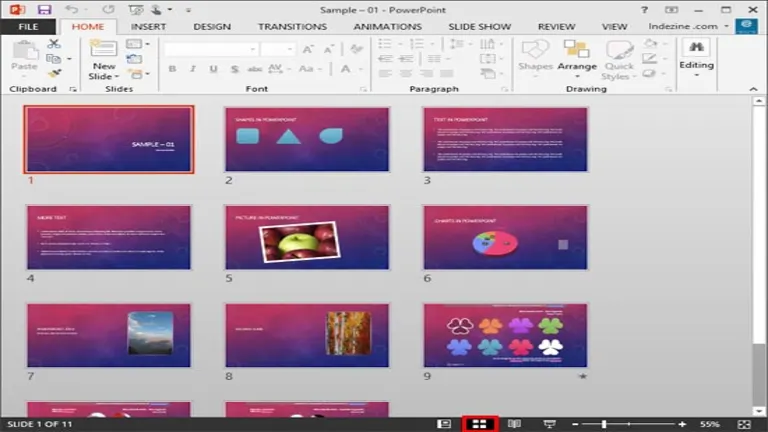
What Is PowerPoint and How it Works
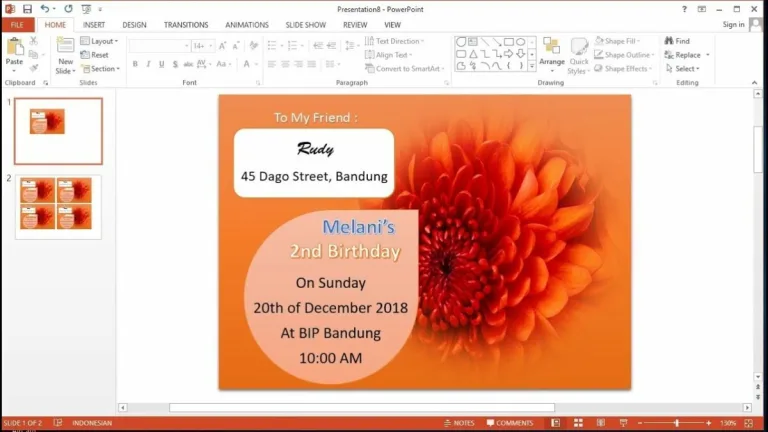
How to Make Invitations With Microsoft Powerpoint in 3 Steps
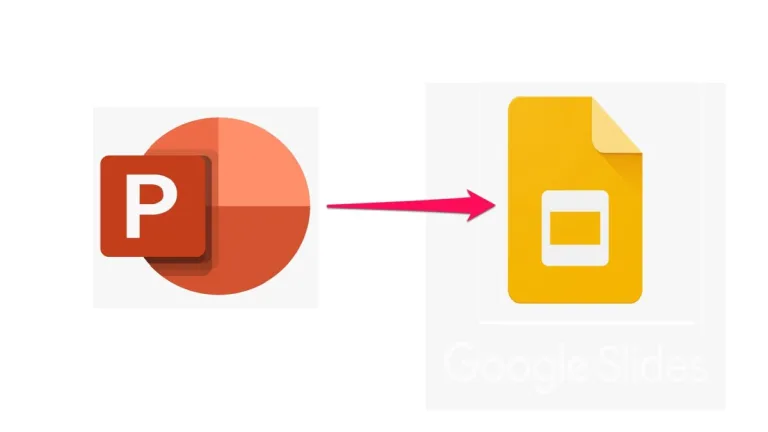
How to Convert Microsoft Powerpoint to Google Slides in 2 Easy Methods
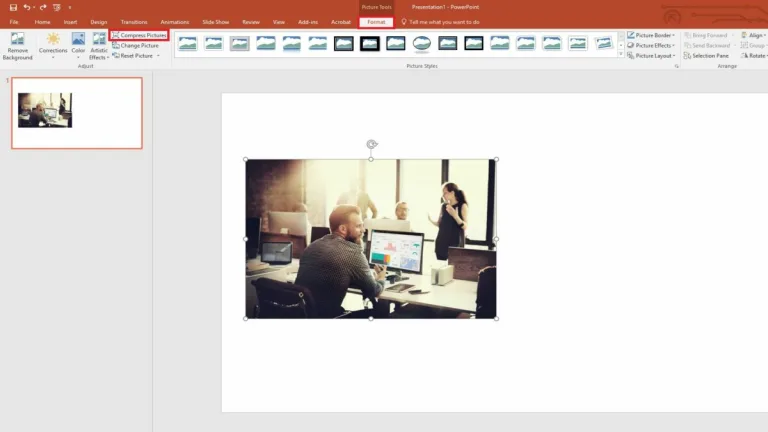
Top 3 Microsoft PowerPoint Tips
Breaking news.

Xbox Cloud Gaming has a new interface and now it really looks like a console

Server and account purge on Discord: Switch emulation would be to blame

We have new details about the remake of Prince of Persia: The Sands of Time

Qualcomm launches a new “revolutionary” IoT technology for the industry

Android 15 could turn your phone into a desktop computer

“AI is going to be as important as the cloud or the internet itself”
Laws concerning the use of this software vary from country to country. We do not encourage or condone the use of this program if it is in violation of these laws. Softonic may receive a referral fee if you click or buy any of the products featured here.
Your review for Microsoft PowerPoint
Thank you for rating!
What do you think about Microsoft PowerPoint? Do you recommend it? Why?
OOPS! This is embarrassing...
Something’s gone terribly wrong. Try this instead

5 Free Mouse Cursor Highlighters For Windows
Welcome to a list of free mouse cursor highlighters for Windows. So you are looking for ways to improve your presentations or want to create better tutorial videos. Well, I faced the same problem while trying to create better tutorial videos on YouTube.
I thought that mouse highlighters should be a pretty common thing, but as it turns out, I only managed to find a few mouse highlighters after a lot of searching. So here they are, along with an alternative. Hope this will help to save you hours of searching – Read on!
1) POINTER FOCUS
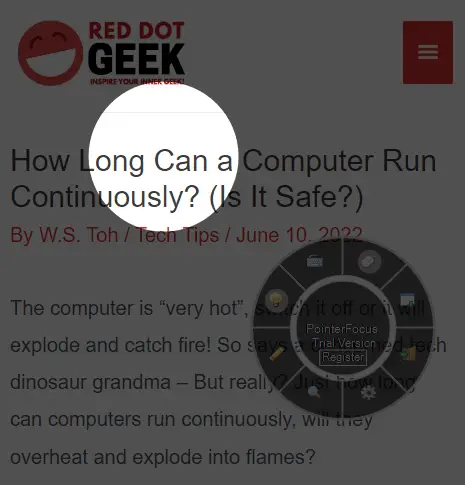
This is definitely one of the better mouse highlighters out there. Apart from the “yellow highlight circle” around the cursor, Pointer Focus is also capable of:
- Indicate and animate mouse clicks (red circle when clicked).
- Magnifying or zooming on the mouse cursor.
- Spotlight. Darken the entire screen, except for a spot around the cursor.
- Displaying keystrokes or shortcut keys.
Yep, all of these features can also be customized. The highlight color, magnify size, spotlight area, and more. I am personally using Pointer Focus to create YouTube tutorials, and will highly recommend it too.
But there is just one problem… Pointer Focus is not freeware, and it will continuously bug you with a “please register” notification. So if you planning to create professional training videos or presentations, the registration price of USD 12 (at the time of writing) is not too bad either.
2) PEN ATTENTION
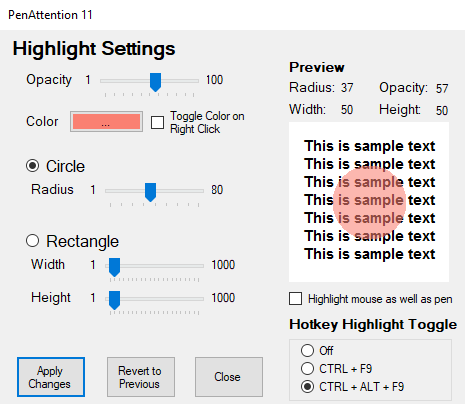
Pen Attention is originally intended to highlight the position of the pen on tablet devices for presentations, but it will work for the mouse as well. Personally, I will call this the “lesser cousin” of Pointer Focus. Yep, Pen Attention does not have as many features as Pointer Focus.
But don’t get me wrong though. It is still a good working mouse highlighter, and the highlight can be customized… Plus, this is a totally free app. Nothing to complain about, a good one to use if you don’t want all the extra features.
3) SPOT ON THE MOUSE
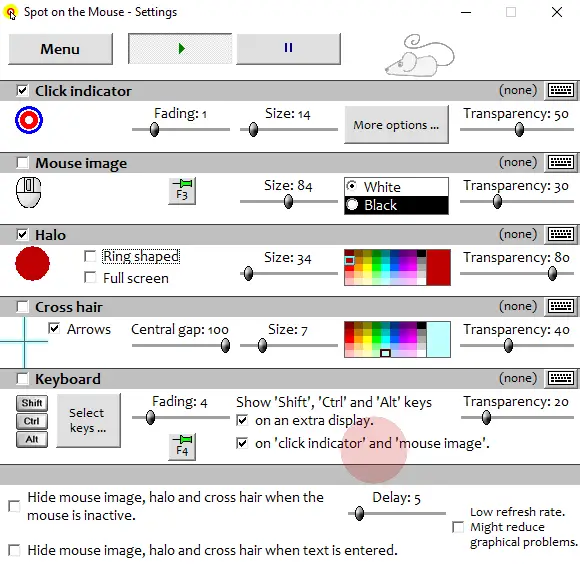
Spot On The Mouse is yet another capable mouse highlighter – Able to highlight the cursor, indicate clicks, keyboard strokes, and is also customizable. But personally, I don’t quite like the interface, especially the lack of using shortcut keys to control the highlighting.
Also, this is not totally free again, and will continue to haunt the users with a “please register” notification… The price of €15 is just kind of steep for me, and Pointer Focus still offers more value for money.
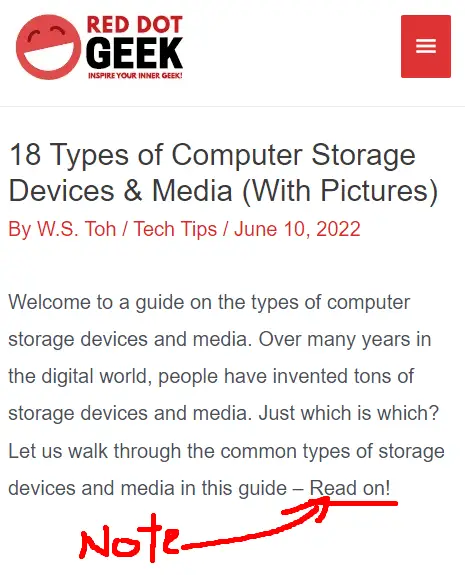
ZoomIt is a delightful little tool buried inside a Microsoft training document (took a lot of digging to find it). While it is not exactly a mouse highlighter, it does enable users to zoom into the screen. Also, the important and interesting feature is that it allows users to draw directly onto the screen. Yep. That is very useful for presentations, and it is totally free too.
5) WINDOWS MOUSE HIGHLIGHT & OPTIONS
For you guys who don’t like any of the above applications – Yes, there are various settings in Windows that we can use to highlight the mouse. So here is an alternative using only “pure Windows features”.
CHANGING THE MOUSE CURSOR
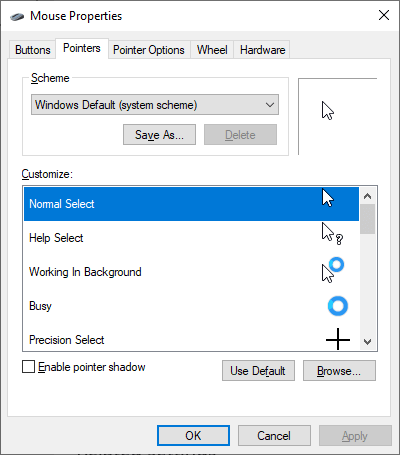
- First, go to the above website (http://rw-website.com).
- Search for “highlight cursors” and download one that you like (or any funky ones that you like).
- In Windows 10 > Start > Search for “mouse settings” > Additional mouse options (under “related mouse options”) > Pointers Tab > Customize.
This one kind of works, but it is a pain to switch between cursors all the time. Good, if you don’t do presentations frequently. Also, a small possible hiccup that I see is with copyright. Some of the cursor sets are released under Creative Commons, but are not free for commercial use.
MOUSE OPTIONS
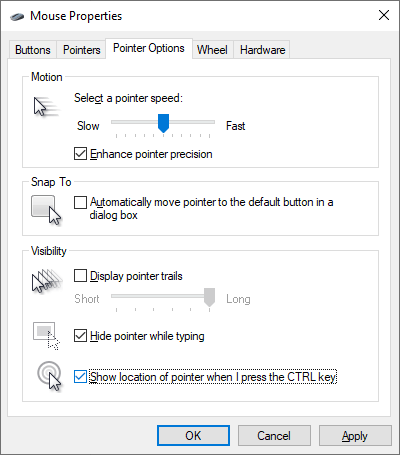
Nope, we are not done yet. Head over to the “Pointer Options” tab, and there’s more.
- Check the “Display pointer trails” if you want… I think this one just confuses people more.
- “Show pointer when I press CTRL” is a good one though. We can use this as a click indicator or spotlight.

Just hit start > search for “magnifier”. Yep, there is a “default” magnifier app in Windows, but it is kind of wonky. There are shortcut keys, but no way to turn it off without bringing up the entire interface first. Also, it seems to be suffering from some performance issues. The magnified area is just “slow and laggy”.

Thank you for reading, and we have come to the end of this list. I hope this has helped you in some ways. If you know more good mouse highlighters, please share it with us in the comments section below. Good luck and may the cyber force be with you.
2 thoughts on “5 Free Mouse Cursor Highlighters For Windows”
Well done research. Thank you.
Leave a Comment Cancel Reply
Your email address will not be published. Required fields are marked *
Best Presentation Remotes for Windows PCs in 2022
What are the best wireless presentation remotes for PC? These are.

If you're giving a big presentation, the ability to move and interact more with your audience is incredibly valuable. If you have to awkwardly stand up behind your laptop the whole time, it's nowhere near as engaging.
You need a reliable presentation remote that connects easily and travels well. Here are our recommendations for the best options for PCs.
Satechi Bluetooth Smart Pointer
Logitech r800, kensington k33374usa.
Why you can trust Windows Central Our expert reviewers spend hours testing and comparing products and services so you can choose the best for you. Find out more about how we test .

I work for a well-traveled magician on the side, and we never go anywhere without our Satechi Bluetooth Smart Pointers. He's gone through three brands, and Satechi has always stood out as the best. The remote connects via Bluetooth and has a fantastic range. (We've generally had great luck between 20 and 30 feet).
If you're clicking through a slideshow and need to go back to a specific slide, there's a handy number pad hidden behind a little slide-out door. If you enter the number of the slide, it'll go back for you, which is incredibly handy when music misfires for a magic trick and you need to try to recapture the wonder.
My whole show rides on my presentation triggering properly, and the Satechi remote has been the only one I've used that works every time — Chris Funk, The Wonderist
You can also control music playback, skip tracks and slides, and control the volume of your device, so you don't need to be anywhere near your computer to do what you need to. These remotes are $45 on Amazon and come in black or silver.
See at Amazon

The Logitech R800 features a bright green laser pointer that's easy to see in any room, and the USB wireless receiver should allay any worries you might feel using a Bluetooth remote. With a 100-foot range, you're free to move about as you please without worrying about losing your connection.
The R800 has an LCD display that features a timer, which delivers silent vibrational alerts, so you can keep track of time without having to disengage from your audience. The large buttons are easy to navigate without having to look, and you'll get solid battery life from just two AAA batteries. Pricing starts around $50.

Doosl's presentation remote is a little thicker than a pen, but it'll still fit comfortably in your pocket, and its hook helps it stay in place so you always know where it is. It features a laser pointer, so you can get the whole room focused on what matters, and it has great page-up and page-down support, as well as play, pause, and black screen controls for PowerPoint presentations.
The universal receiver means you can just plug in and go — no driver or pairing is required. Just in case you forget to turn off your Doosl, it features auto standby and "deep sleep" modes to conserve battery. Pricing starts at only $15.

Kensington's $30-ish wireless presenter is designed to be ergonomic, with a comfortable in-hand feel and a simple button layout that allows you to switch back and forth between slides and use the laser pointer without needing to constantly look down at your hand.
The mini USB receiver fits in the remote's housing, so it never gets lost, and you don't need to pair the remote with your computer or install a driver — just plug it in and away you go. The receiver has a 60-foot range, so you'll be able to move about the room with confidence, knowing you'll stay connected.

Aside from its wicked cool name, the DinoFire presentation remote is an awesome, pen-sized device that uses an RF receiver to communicate with your computer. It can control PowerPoint, the whole iWork suite, Word, and Excel, so if you're giving any sort of business presentation, you're covered. And at only around $14, you can grab a couple for the road.
This remote runs on one AAA battery, and that's either convenient because you don't need to remember to charge it, or it's a little inconvenient because you can't just recharge it on the go. The RF receiver has a 98-foot range, so whether you're in a conference room or an auditorium, you're connected and in control.

This wireless presentation remote features a USB receiver, a 39-foot range, and an excellent button layout for presentations where full engagement is key. The forward and back buttons are defined by raised bumps, so you know exactly which way your presentation is going at all times. There's also a blackout mode, so you can cut to black at the end or while you prepare your presentation.
For $15, this remote isn't exactly feature-rich, but according to its Amazon reviews , it's reliable and a great minimalist option. It supports the Office suite, and it has a red laser pointer. And it takes one AAA battery.
What say you?
Do you have a favorite presentation remote? Let us know in the comments below.
Updated February 2018: Added the Beboncool budget option and swapped in the Logitech R800 in place of the R400, since its LCD display is perfect for timed presentations and total control. Also added pricing for each remote.
Get the Windows Central Newsletter
All the latest news, reviews, and guides for Windows and Xbox diehards.

Mike is a staff writer at Mobile Nations and fancies himself a musician and comedian. Keep dreaming, Mike.
- 2 Microsoft's Bill Gates is worried about losing his job to AI, though it could potentially present a 3-day workweek opportunity
- 3 The newest version of Lenovo's legendary business laptop is simultaneously a blast from the past and a taste of the future
- 4 Microsoft wants to run ads in your Start menu on Windows 11
- 5 Bethesda director reveals new Fallout 4 connection to first game, making its main character complicit in a war crime [UPDATED]
Focus your audience's attention. Since 2010
Mouse Toolbox for Presenters and Trainers
What's pointerfocus.
With the help of PointerFocus you can keep your audience focus on the area of interest and make your demonstration more understandable.
PointerFocus Demo Video
PointerFocus Features:
Who needs pointerfocus.
- Demo Makers
What's new in version 2.4
- Added: Select pen color from right click menu
- Added: Select pen size from right click menu
- Improved: Spotlight performance
- Fixed: some small bugs
What's new in version 2.3
What's new in version 2.2.
- Added: New Option for Hiding highlight circle
- Added: New software icon
- Improved: Smooth drawing of UI
What's new in version 2.1
- Added: New Option for Showing Mouse Click Action Text
- Added: New Option for Showing all Keystrokes
- Added: New Option for highlight cursor
What's new in version 2.0
- Added: New Toolbar UI
- Added: Optimize performance for Windows 10
What's new in version 1.9
- Added: Supports more drawing tools in Pen mode
- Added: Option to hide hint text in Pen mode
What's new in version 1.8
- Added: Supports Mouse Gestures to toggle spotlight, pen and magnifier functions
- Added: Supports presentation pointer mode when using Pen function
What's new in version 1.7
- Fixed: Options Dialog font size under 120 DPI
- Fixed: Magnifier and spotlight covered by menu
- Added: Supports Dual Screen(Dual Monitors)
What's new in version 1.6
- Fixed: "Double Accent Mark" bug when inputting Spanish.
- Fixed: magnifier center bug on some high resolution screen.
- Optimized "Magnifier" Function. Magnifier can reposition when out of screen boundary.
What's new in version 1.5
- Optimized "Keystroke visualization" Function. Prevent repeatedly showing same keystrokes
- Tested on Windows 8.1 system. Ready for Windows 8.1
What's new in version 1.4
- Supports Android App to Remote Control Mouse Actions and PointerFocus Functions
What's new in version 1.3
- Supports hotkeys to switch Highlight Cursor and Keystroke Visualization.
- Supports minimizing Toolbar to System Tray Icon
- Add option to disable the glass effect in Magnifier
- Supports Tray Icon Menu to switch tools
- Toolbar can remember the last position.
What's new in version 1.2
- Supports hotkeys to switch Mouse Spotlight, Pen and Magnifier.
- Supports minimizing Toolbar to Windows Task Bar
- Screenshots
- Demo Videos
- PointerFocus Remote
- Beta Version
- How to highlight mouse pointer for presentations or demos
- How to turn mouse pointer into a spotlight
- Mouse Gestures in PointerFocus
- 프리젠테이션또는데모를위해마우스포인터를강조표시하는방법
- Windowsマウスポインタにハイライト及びスポットライトの効果が見えるソフトウェアー
- Lassen Sie Ihren Windows-Mauszeiger markieren und Spotlight-Effekt erreichen
- Surbrillance d'un curseur de souris et projecteur
- Draw on screen with PointerFocus Annotation Tools
- Display Keystrokes and Mouse Clicks on Screen
We’re sorry, but Freepik doesn’t work properly without JavaScript enabled. FAQ Contact
- Notifications
- Go back Remove
- No notifications to show yet You’ll see useful information here soon. Stay tuned!
- Downloads 0/60 What is this?
- My collections
- My subscription
Find out what’s new on Freepik and get notified about the latest content updates and feature releases.
Presentation Pointer Vectors

- Add to collection
- Save to Pinterest
- flat infographic
- information chart
- infographic elements
- circle number
- bullet point

- number design

- graph design
- graphic chart

- infographic numbers
- infographic presentation
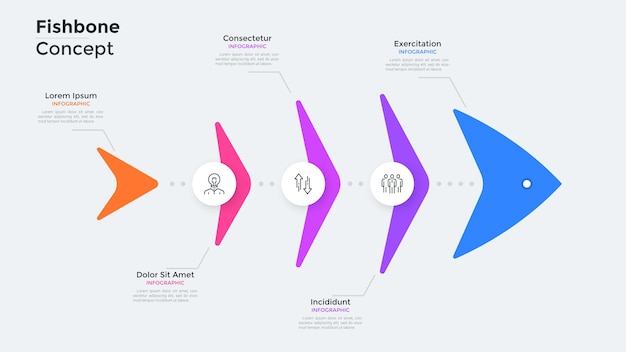
- five elements
- five infographic

- infographic set
- data infographic

- neumorphism
- ui elements
- ui interface

- bullet list

- arrow chart
- finance infographic

- finger click

- illustration pack

- location pointer

- process diagram
- process steps
- collaboration
- next button

- project presentation

- arrow button

- directional arrows
- right arrow

- direction arrow
From Ideas to Impactful Presentations
Free Templates & Infographics for PowerPoint and Google Slides

Segmented Paper Fold
Google Slides , PPTX

Puzzle Process Flow
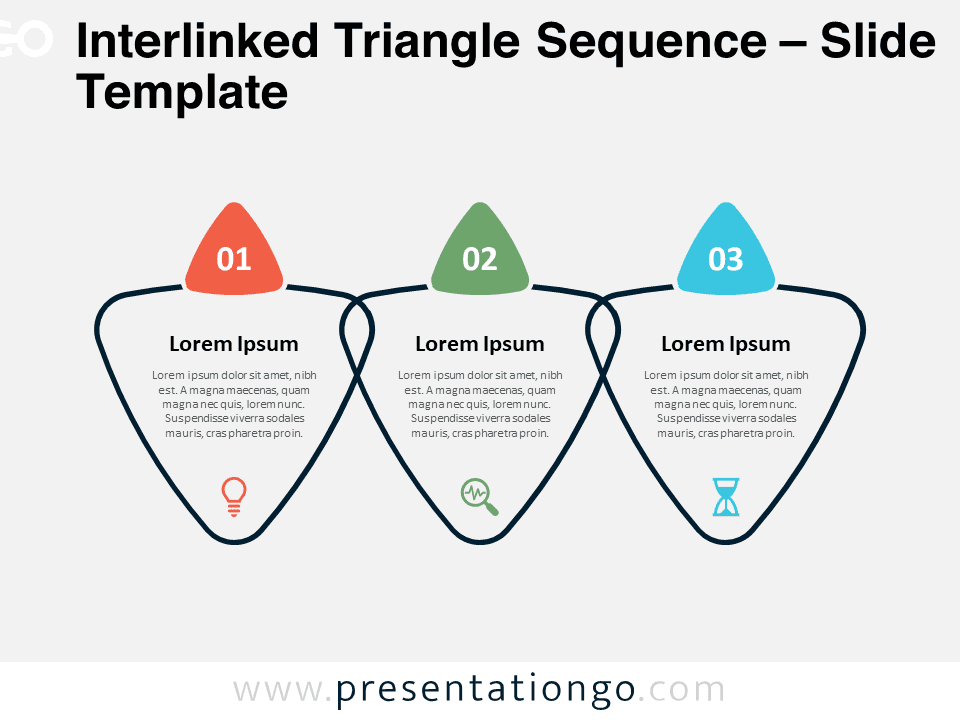
Interlinked Triangle Sequence

Hexagon Hierarchy Tree

Full-Width Yearly Gantt Chart

Minimalist Gantt Chart
Trending templates.
Popular searches:
Ideas & Resources
Uncover a world of innovative ideas, creative insights, and design tips to enhance your PowerPoint and Google Slides presentations.

Mastering Text Emphasis in Your Presentation: Tips and Techniques

2023 Presentation Design Trends

How to Ace Your Sales Presentation in 10 Steps

How To Install Color Theme XML Files in PowerPoint
Presentationgo – 2,479 free google slides themes and powerpoint templates.
Comprehensive Collection
Explore 2,479 free templates and graphics for captivating presentations, with new content added daily.
Premium-Quality Designs
Expertly crafted graphics by designers and fine-tuned by seasoned presenters for maximum impact.
Effortless Customization
Fully editable graphics for seamless modification, tailored to your specific needs.
Absolutely Free
Experience hassle-free, 100% free downloads without the need for registration – access through a direct link instantly.
PresentationGO is your go-to source for an extensive and ever-expanding library of free templates tailored for PowerPoint and Google Slides . Our collection is rich in diversity, covering a wide spectrum of graphics specifically designed for presentations across various domains, ensuring you find exactly what you need for your next project.
Crafted with premium quality by skilled designers, our unique and exclusive designs are meticulously optimized for slide formats, guaranteeing to elevate the effectiveness of your presentations. With over 2,479 high-quality templates , PresentationGO offers a vast selection that includes themes and backgrounds, charts and diagrams, text and tables, timelines and planning, as well as graphics and metaphors and maps.
Our fully editable graphics and themes are designed for effortless customization , allowing you to tailor each template to meet your unique needs. Available in both standard and widescreen formats and optimized for light and dark backgrounds , our templates ensure your presentations are visually appealing and professional, without the need for additional adjustments.
In conclusion, PresentationGO provides an all-inclusive resource for Google Slides themes and PowerPoint templates , encompassing everything required to create an engaging, visually stunning presentation. Embark on exploring our remarkable collection today to discover the perfect elements that will make your presentation stand out.
Love our templates? Show your support with a coffee!
Thank you for fueling our creativity.
Charts & Diagrams
Text & Tables
Graphics & Metaphors
Timelines & Planning
Best-Ofs & Tips
Terms and Conditions
Privacy Statement
Cookie Policy
Digital Millennium Copyright Act (DMCA) Policy
© Copyright 2024 Ofeex | PRESENTATIONGO® is a registered trademark | All rights reserved.

To provide the best experiences, we and our partners use technologies like cookies to store and/or access device information. Consenting to these technologies will allow us and our partners to process personal data such as browsing behavior or unique IDs on this site and show (non-) personalized ads. Not consenting or withdrawing consent, may adversely affect certain features and functions.
Click below to consent to the above or make granular choices. Your choices will be applied to this site only. You can change your settings at any time, including withdrawing your consent, by using the toggles on the Cookie Policy, or by clicking on the manage consent button at the bottom of the screen.
Thank you for downloading this template!
Remember, you can use it for free but you have to attribute PresentationGO . For example, you can use the following text:
If you really like our free templates and want to thank/help us, you can:
Thank you for your support

- Popular Categories
Powerpoint Templates
Icon Bundle
Kpi Dashboard
Professional
Business Plans
Swot Analysis
Gantt Chart
Business Proposal
Marketing Plan
Project Management
Business Case
Business Model
Cyber Security
Business PPT
Digital Marketing
Digital Transformation
Human Resources
Product Management
Artificial Intelligence
Company Profile
Acknowledgement PPT
PPT Presentation
Reports Brochures
One Page Pitch
Interview PPT
All Categories
Powerpoint Templates and Google slides for Pointer
Save your time and attract your audience with our fully editable ppt templates and slides..
Item 1 to 60 of 246 total items
- You're currently reading page 1

Deliver a credible and compelling presentation by deploying this Pointer Icon Arrow Browser Computer Scanning Displayed. Intensify your message with the right graphics, images, icons, etc. presented in this complete deck. This PPT template is a great starting point to convey your messages and build a good collaboration. The eleven slides added to this PowerPoint slideshow helps you present a thorough explanation of the topic. You can use it to study and present various kinds of information in the form of stats, figures, data charts, and many more. This Pointer Icon Arrow Browser Computer Scanning Displayed PPT slideshow is available for use in standard and widescreen aspects ratios. So, you can use it as per your convenience. Apart from this, it can be downloaded in PNG, JPG, and PDF formats, all completely editable and modifiable. The most profound feature of this PPT design is that it is fully compatible with Google Slides making it suitable for every industry and business domain.
This complete deck can be used to present to your team. It has PPT slides on various topics highlighting all the core areas of your business needs. This complete deck focuses on Geographic Icon Location Pointer Navigation Circle Document and has professionally designed templates with suitable visuals and appropriate content. This deck consists of total of twelve slides. All the slides are completely customizable for your convenience. You can change the colour, text and font size of these templates. You can add or delete the content if needed. Get access to this professionally designed complete presentation by clicking the download button below.

Our topic specific Crawl Walk Run Fly Arrow Pointer presentation deck contains eight slides to formulate the topic with a sound understanding. This PPT deck is what you can bank upon. With diverse and professional slides at your side, worry the least for a powerpack presentation. A range of editable and ready to use slides with all sorts of relevant charts and graphs, overviews, topics subtopics templates, and analysis templates makes it all the more worth. This deck displays creative and professional looking slides of all sorts. Whether you are a member of an assigned team or a designated official on the look out for impacting slides, it caters to every professional field.
It has PPT slides covering wide range of topics showcasing all the core areas of your business needs. This complete deck focuses on Coffee Icon Maker Location Pointer Serve Hot and consists of professionally designed templates with suitable graphics and appropriate content. This deck has total of twelve slides. Our designers have created customizable templates for your convenience. You can make the required changes in the templates like colour, text and font size. Other than this, content can be added or deleted from the slide as per the requirement. Get access to this professionally designed complete deck PPT presentation by clicking the download button below.

Engage buyer personas and boost brand awareness by pitching yourself using this prefabricated set. This 8 Pointers Business Strategy Financial Performance Planning Historical is a great tool to connect with your audience as it contains high-quality content and graphics. This helps in conveying your thoughts in a well-structured manner. It also helps you attain a competitive advantage because of its unique design and aesthetics. In addition to this, you can use this PPT design to portray information and educate your audience on various topics. With twelve slides, this is a great design to use for your upcoming presentations. Not only is it cost-effective but also easily pliable depending on your needs and requirements. As such color, font, or any other design component can be altered. It is also available for immediate download in different formats such as PNG, JPG, etc. So, without any further ado, download it now.

This presentation comprises a total of twelve slides. Each slide focuses on one of the aspects of Milestone With Upward Path Showing Pointers Of Years Roadmap Business with content extensively researched by our business research team. Our team of PPT designers used the best of professional PowerPoint templates, images, icons and layouts. Also included are impressive, editable data visualization tools like charts, graphs and tables. When you download this presentation by clicking the Download button, you get the presentation in both standard and widescreen format. All slides are fully customizable. Change the colors, font, size, add and remove things as per your need and present before your audience.
Presenting this set of slides with name - Gps Tracking With Map Pointer. This is a five stage process. The stages in this process are Gps Tracking, Location Tracking, Navigation.
Presenting this set of slides with name - Gps Tracking With Location Pointer. This is a four stage process. The stages in this process are Gps Tracking, Location Tracking, Navigation.
Presenting this set of slides with name Pointer Icon Showing Multiple Locations. This is a one stage process. The stages in this process are Pointer Icon Showing Multiple Locations. This is a completely editable PowerPoint presentation and is available for immediate download. Download now and impress your audience.
Presenting this Rent Red Web Pointer Icon slideshow. Transform this into common images or document formats like JPEG and PDF. It supports both the standard and widescreen viewing angles. It is also compatible with Google Slides and MS PowerPoint. Alter the style, size, background and other attributes of the PPT. High-quality graphics will ensure that picture quality always remains the same.
Presenting this set of slides with name Lightning In Location Pointer Icon. This is a three stage process. The stages in this process are Lightning In Location Pointer Icon. This is a completely editable PowerPoint presentation and is available for immediate download. Download now and impress your audience.
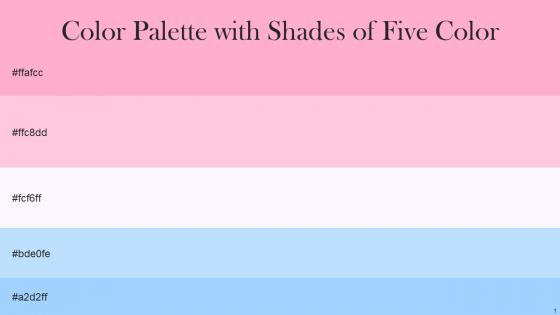
This color palette has a unique combination of five color shades including Carnation Pink, Pastel Pink, White Pointer, French Pass, Anakiwa. You can use them for design inspiration, color themes, and much more.Carnation Pink Pastel Pink White Pointer French Pass Anakiwa gives an aesthetic touch to graphics, illustrations, icons, or any other design idea you have in mind.

Deliver a lucid presentation by utilizing this Indonesia Flag Waterfall Beach Location Crowd Pointer. Use it to present an overview of the topic with the right visuals, themes, shapes, and graphics. This is an expertly designed complete deck that reinforces positive thoughts and actions. Use it to provide visual cues to your audience and help them make informed decisions. A wide variety of discussion topics can be covered with this creative bundle such as Indonesia Flag,Waterfall,Beach,Location,Crowd. All the twelve slides are available for immediate download and use. They can be edited and modified to add a personal touch to the presentation. This helps in creating a unique presentation every time. Not only that, with a host of editable features, this presentation can be used by any industry or business vertical depending on their needs and requirements. The compatibility with Google Slides is another feature to look out for in the PPT slideshow.

Deliver a credible and compelling presentation by deploying this European Union Map Location Pointer Flag Shape Political Relations. Intensify your message with the right graphics, images, icons, etc. presented in this complete deck. This PPT template is a great starting point to convey your messages and build a good collaboration. The twelve slides added to this PowerPoint slideshow helps you present a thorough explanation of the topic. You can use it to study and present various kinds of information in the form of stats, figures, data charts, and many more. This European Union Map Location Pointer Flag Shape Political Relations PPT slideshow is available for use in standard and widescreen aspects ratios. So, you can use it as per your convenience. Apart from this, it can be downloaded in PNG, JPG, and PDF formats, all completely editable and modifiable. The most profound feature of this PPT design is that it is fully compatible with Google Slides making it suitable for every industry and business domain.
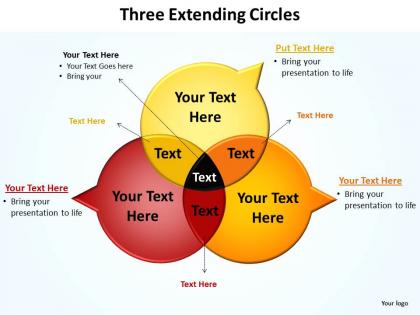
These high quality, editable pre-designed three extending circles shown as venn diagrams with pointers powerpoint diagram templates graphics 712 powerpoint slides and powerpoint templates have been carefully created by our professional team to help you impress your audience. Each graphic in every powerpoint slide is vector based and is 100% editable in powerpoint.
Use this diagram to show a progression or a sequence of stages, tasks, or events in a circular flow. Emphasizes the interconnected pieces
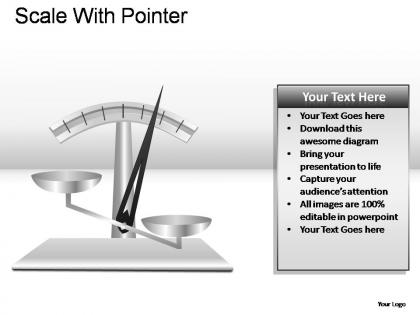
These high quality, editable pre-designed powerpoint slides and powerpoint templates have been carefully created by our professional team to help you impress your audience. Each graphic in every powerpoint slide is vector based and is 100% editable in powerpoint.Each and every property of any slide - color, size, shading etc can be modified to build an effective powerpoint presentation. Use these slides to convey complex business concepts in a simplified manner. Any text can be entered at any point in the powerpoint slide. Simply DOWNLOAD, TYPE and PRESENT
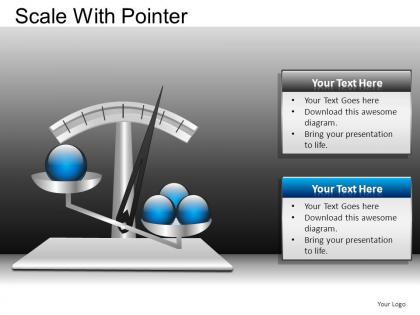
This template is skillfully designed and is completely editable to suit all the needs and requirements of the user. The color of the font, its size, style, and all other elements can be customized according to the user's desire The text in the PPT placeholder can be replaced with the desired information making this template highly flexible and adaptable as well. This template is also compatible with various Microsoft versions and formats like Google Slides, JPG, PDF, etc so the user will face no issue in saving it in the format of his choice.
Introducing our premium set of slides with R And D Roadmap Icon With Location Pointers. Ellicudate the three stages and present information using this PPT slide. This is a completely adaptable PowerPoint template design that can be used to interpret topics like R And D Roadmap, Icon With Location Pointers. So download instantly and tailor it with your information.

Presenting Smart Pointers Raw Pointers In Powerpoint And Google Slides Cpb slide which is completely adaptable. The graphics in this PowerPoint slide showcase three stages that will help you succinctly convey the information. In addition, you can alternate the color, font size, font type, and shapes of this PPT layout according to your content. This PPT presentation can be accessed with Google Slides and is available in both standard screen and widescreen aspect ratios. It is also a useful set to elucidate topics like Smart Pointers Raw Pointers. This well-structured design can be downloaded in different formats like PDF, JPG, and PNG. So, without any delay, click on the download button now.
This coloured PowerPoint icon from Arrive is perfect for adding a touch of vibrancy to your presentations. It is a great way to make your slides stand out and capture your audiences attention.
This monotone PowerPoint icon is perfect for presentations. It features a modern design with a neutral color palette, making it easy to customize and integrate into your slides. It is a great choice for any project that needs a professional look.
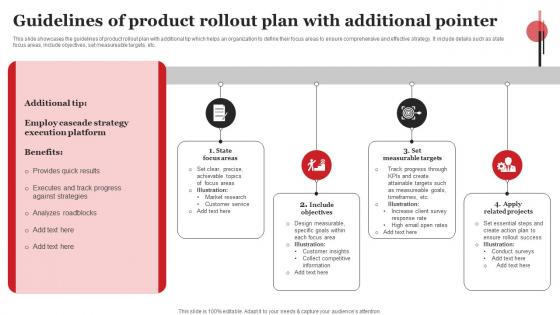
This slide showcases the guidelines of product rollout plan with additional tip which helps an organization to define their focus areas to ensure comprehensive and effective strategy. It include details such as state focus areas, include objectives, set measureable targets, etc. Introducing our premium set of slides with Guidelines Of Product Rollout Plan With Additional Pointer. Ellicudate the four stages and present information using this PPT slide. This is a completely adaptable PowerPoint template design that can be used to interpret topics like Focus, Objectives, Targets. So download instantly and tailor it with your information.
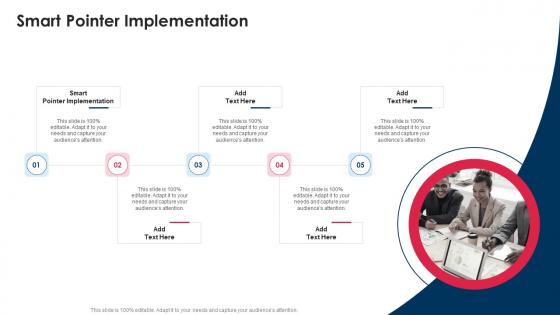
Presenting our Smart Pointer Implementation In Powerpoint And Google Slides Cpb PowerPoint template design. This PowerPoint slide showcases five stages. It is useful to share insightful information on Smart Pointer Implementation. This PPT slide can be easily accessed in standard screen and widescreen aspect ratios. It is also available in various formats like PDF, PNG, and JPG. Not only this, the PowerPoint slideshow is completely editable and you can effortlessly modify the font size, font type, and shapes according to your wish. Our PPT layout is compatible with Google Slides as well, so download and edit it as per your knowledge.
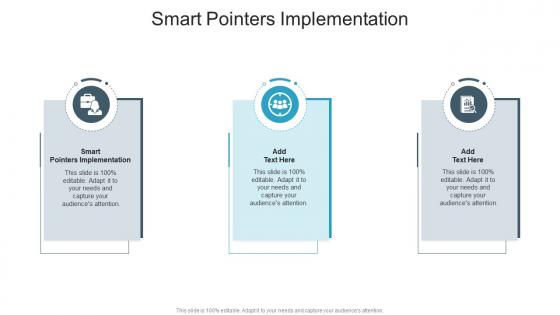
Presenting our Smart Pointers Implementation In Powerpoint And Google Slides Cpb PowerPoint template design. This PowerPoint slide showcases three stages. It is useful to share insightful information on Smart Pointers Implementation This PPT slide can be easily accessed in standard screen and widescreen aspect ratios. It is also available in various formats like PDF, PNG, and JPG. Not only this, the PowerPoint slideshow is completely editable and you can effortlessly modify the font size, font type, and shapes according to your wish. Our PPT layout is compatible with Google Slides as well, so download and edit it as per your knowledge.
This brightly coloured PowerPoint icon features a bank location symbol, perfect for adding a professional touch to your financial presentations. The iconic image is easily recognizable and will help to visually enhance your slides. It is available in multiple vibrant colours to suit your presentation theme.
This Monotone powerpoint icon features a simple and sleek design, perfect for presentations related to bank locations. The icon showcases a map with a pinpoint location, representing the convenience and accessibility of banks. It is a versatile and professional addition to any financial or banking presentation.
Use this circle chart to make your team understand complex processes.
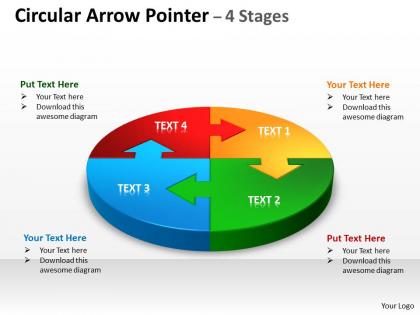
Presenting this set of slides with name - Highlights Image Represented By A Pointer Scale With Businessman Background. This is a three stage process. The stages in this process are Highlights, High Point, High Spot.

This slide covers points to carry out while preparing plan for business. These include determine planning technique, vision statement, mission statement and define objective. Presenting our set of slides with name Key Pointers For A Successful Five Year Business Plan. This exhibits information on four stages of the process. This is an easy-to-edit and innovatively designed PowerPoint template. So download immediately and highlight information on Determine Planning Technique, Craft Mission Statement, Focus On Vision Statement.
Give your next presentation a sophisticated, yet modern look with this 100 percent editable Web with mouse pointer colored icon in powerpoint pptx png and editable eps format. Choose from a variety of customizable formats such as PPTx, png, eps. You can use these icons for your presentations, banners, templates, One-pagers that suit your business needs.
Make your presentation profoundly eye-catching leveraging our easily customizable Web with mouse pointer monotone icon in powerpoint pptx png and editable eps format. It is designed to draw the attention of your audience. Available in all editable formats, including PPTx, png, and eps, you can tweak it to deliver your message with ease.
Give your next presentation a sophisticated, yet modern look with this 100 percent editable Mobile application with pointer colored icon in powerpoint pptx png and editable eps format. Choose from a variety of customizable formats such as PPTx, png, eps. You can use these icons for your presentations, banners, templates, One-pagers that suit your business needs.
Make your presentation profoundly eye-catching leveraging our easily customizable Mobile application with pointer monotone icon in powerpoint pptx png and editable eps format. It is designed to draw the attention of your audience. Available in all editable formats, including PPTx, png, and eps, you can tweak it to deliver your message with ease.
Give your next presentation a sophisticated, yet modern look with this 100 percent editable Location tracking with map pointer colored icon in powerpoint pptx png and editable eps format. Choose from a variety of customizable formats such as PPTx, png, eps. You can use these icons for your presentations, banners, templates, One-pagers that suit your business needs.
Make your presentation profoundly eye-catching leveraging our easily customizable Location tracking with map pointer monotone icon in powerpoint pptx png and editable eps format. It is designed to draw the attention of your audience. Available in all editable formats, including PPTx, png, and eps, you can tweak it to deliver your message with ease.
Give your next presentation a sophisticated, yet modern look with this 100 percent editable Mouse pointer on desktop colored icon in powerpoint pptx png and editable eps format. Choose from a variety of customizable formats such as PPTx, png, eps. You can use these icons for your presentations, banners, templates, One-pagers that suit your business needs.
Make your presentation profoundly eye-catching leveraging our easily customizable Mouse pointer on desktop monotone icon in powerpoint pptx png and editable eps format. It is designed to draw the attention of your audience. Available in all editable formats, including PPTx, png, and eps, you can tweak it to deliver your message with ease.
Give your next presentation a sophisticated, yet modern look with this 100 percent editable Website url with mouse pointer colored icon in powerpoint pptx png and editable eps format. Choose from a variety of customizable formats such as PPTx, png, eps. You can use these icons for your presentations, banners, templates, One-pagers that suit your business needs.
Make your presentation profoundly eye-catching leveraging our easily customizable Website url with mouse pointer monotone icon in powerpoint pptx png and editable eps format. It is designed to draw the attention of your audience. Available in all editable formats, including PPTx, png, and eps, you can tweak it to deliver your message with ease.
Presenting our well structured Client Onboarding Roadmap Icon With Location Pointers. The topics discussed in this slide are Client onboarding roadmap icon, location pointers. This is an instantly available PowerPoint presentation that can be edited conveniently. Download it right away and captivate your audience.
Give your next presentation a sophisticated, yet modern look with this 100 percent editable Required pointer colored icon in powerpoint pptx png and editable eps format. Choose from a variety of customizable formats such as PPTx, png, eps. You can use these icons for your presentations, banners, templates, One-pagers that suit your business needs.
Make your presentation profoundly eye-catching leveraging our easily customizable Required pointer monotone icon in powerpoint pptx png and editable eps format. It is designed to draw the attention of your audience. Available in all editable formats, including PPTx, png, and eps, you can tweak it to deliver your message with ease.
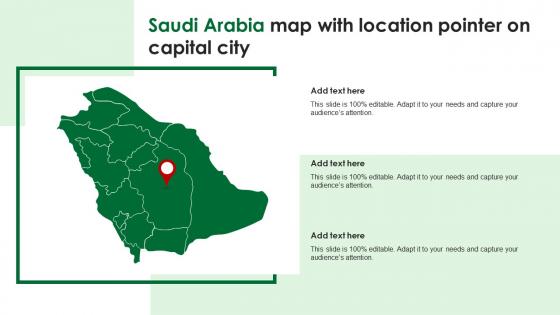
Introducing our premium set of slides with Saudi Arabia Map With Location Pointer On Capital City. Elucidate the three stages and present information using this PPT slide. This is a completely adaptable PowerPoint template design that can be used to interpret topics like Saudi Arabia, Location, Capital City. So download instantly and tailor it with your information.
Give your next presentation a sophisticated, yet modern look with this 100 percent editable Brand fondness pointer colored icon in powerpoint pptx png and editable eps format. Choose from a variety of customizable formats such as PPTx, png, eps. You can use these icons for your presentations, banners, templates, One-pagers that suit your business needs.
Make your presentation profoundly eye-catching leveraging our easily customizable Brand fondness pointer monotone icon in powerpoint pptx png and editable eps format. It is designed to draw the attention of your audience. Available in all editable formats, including PPTx, png, and eps, you can tweak it to deliver your message with ease.
This Monotone powerpoint icon features a rainy location, perfect for presentations on weather, climate, and the environment. It is a simple and elegant design that can be used to enhance any presentation.
This powerpoint icon features a colourful illustration of a rainy location, perfect for adding a touch of vibrancy to any presentation. It is a high resolution vector image, making it easy to resize and edit to suit your needs.
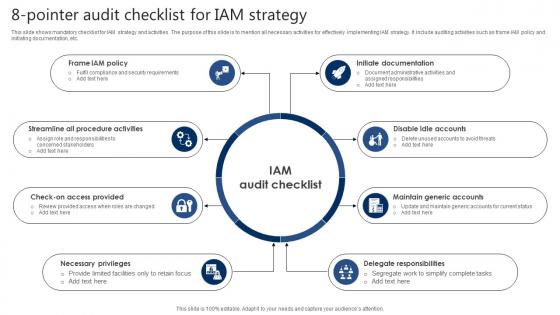
This slide shows mandatory checklist for IAM strategy and activities. The purpose of this slide is to mention all necessary activities for effectively implementing IAM strategy. It include auditing activities such as frame IAM policy and initiating documentation, etc. Presenting our set of slides with 8 Pointer Audit Checklist For IAM Strategy. This exhibits information on eight stages of the process. This is an easy to edit and innovatively designed PowerPoint template. So download immediately and highlight information on Strategy, Policy, Activities.
This colourful PowerPoint icon is perfect for mapping out and visualizing ideas. It features a blue map book with a gold coloured border and a magnifying glass. Use it to illustrate your presentations and make your ideas stand out.
This Monotone PowerPoint Icon on Map Book is a high quality vector graphic, perfect for presentations and other projects. It features a detailed map book with a monotone color palette, making it easy to read and understand. Its perfect for any project that needs a map based visual.
This vibrant coloured PowerPoint icon is perfect for illustrating road navigation. It features a detailed illustration of a road sign with an arrow pointing forward, making it an ideal choice for presentations on navigation and transportation.
This monotone PowerPoint icon is perfect for presentations on road navigation. It features a car driving on a winding road with a bright sun in the background. It is a great visual aid to convey the concept of road navigation and provides a simple, yet effective way to illustrate the topic.
This coloured PowerPoint icon is perfect for presentations on car tracking. It features a bright yellow car with a tracking device attached, set against a white background. The icon is easy to edit and can be used to illustrate car tracking technology.
This monotone powerpoint icon is perfect for presentations related to car tracking. It features a car with a GPS tracker, showing the ability to monitor vehicles in real time. The icon is simple, modern and eye-catching, making it ideal for any presentation.
This Location Map PowerPoint Icon is a colourful and vibrant representation of a map. It is perfect for presentations and projects that require a visual aid to show geographical locations. The icon is easy to use and is sure to add a professional touch to your presentation.
This monotone PowerPoint icon is an ideal representation of a location map. It features a simple and clear design, perfect for any presentation. It can be used to show the location of a business, a city, or any other geographic location.
This coloured powerpoint icon is perfect for track navigation. It is a bright and vibrant icon, with a modern design that will add a professional look to any presentation. It is easy to use and will help you to quickly and easily navigate through your presentation.
This monotone powerpoint icon is perfect for track navigation in presentations. It features a simple design with a curved arrow pointing to the right. It is a great visual aid to help keep your audience on track and engaged.
This coloured powerpoint icon depicts a street map with a vibrant colour palette. It is perfect for creating presentations, infographics, and other visuals to help illustrate your message. It is easy to customize and can be used to create a unique and eye-catching design.
This monotone powerpoint icon on a street map is perfect for presentations, reports, and other business documents. It features a detailed street map with a black and white color scheme for a professional and modern look. It is easy to customize and can be used to help visualize data in a visually appealing way.


- Right click on the pointer graphic, and save it locally.
- Copy the pointer graphic file to the subfolder "model\pointer" of the Presentation Pointer installation directory. For example "C:\Program Files\Presentation Pointer\model\pointer".
- Restart Presentation Pointer.
Creating your own Pointer
When Presentation Pointer is launched, it looks for all PNG files at the subfolder "model\pointer" of the Presentation Pointer installation directory.
You can create any graphic you like, and as long as you save it in PNG format, and name it as described, and copy it to the folder "model\pointer". The Presentation Pointer will use it for the pointer graphic. There are a couple of points to be aware of to get the best from your pointer.
- If the software you are using supports transparency, make use of it.
- Save your pointer as a 24 bit PNG, as any transparency performs better at this depth.
- Keep the area under the point of the mouse transparent, so that when you dismiss the pointer with a mouse click, you can see what you are clicking on.
Sharing your Pointer
If you create a pointer that you want to share, click here to send it to us and we will display it on this site for others to download.
Please do not place any licensing or distribution restrictions on your pointers.

Top searches
Trending searches

infertility
30 templates

16 templates

49 templates

27 templates

frida kahlo
56 templates

el salvador
32 templates
Create your presentation
Writing tone, number of slides.

AI presentation maker
When lack of inspiration or time constraints are something you’re worried about, it’s a good idea to seek help. Slidesgo comes to the rescue with its latest functionality—the AI presentation maker! With a few clicks, you’ll have wonderful slideshows that suit your own needs . And it’s totally free!

Generate presentations in minutes
We humans make the world move, but we need to sleep, rest and so on. What if there were someone available 24/7 for you? It’s time to get out of your comfort zone and ask the AI presentation maker to give you a hand. The possibilities are endless : you choose the topic, the tone and the style, and the AI will do the rest. Now we’re talking!
Customize your AI-generated presentation online
Alright, your robotic pal has generated a presentation for you. But, for the time being, AIs can’t read minds, so it’s likely that you’ll want to modify the slides. Please do! We didn’t forget about those time constraints you’re facing, so thanks to the editing tools provided by one of our sister projects —shoutouts to Wepik — you can make changes on the fly without resorting to other programs or software. Add text, choose your own colors, rearrange elements, it’s up to you! Oh, and since we are a big family, you’ll be able to access many resources from big names, that is, Freepik and Flaticon . That means having a lot of images and icons at your disposal!

How does it work?
Think of your topic.
First things first, you’ll be talking about something in particular, right? A business meeting, a new medical breakthrough, the weather, your favorite songs, a basketball game, a pink elephant you saw last Sunday—you name it. Just type it out and let the AI know what the topic is.
Choose your preferred style and tone
They say that variety is the spice of life. That’s why we let you choose between different design styles, including doodle, simple, abstract, geometric, and elegant . What about the tone? Several of them: fun, creative, casual, professional, and formal. Each one will give you something unique, so which way of impressing your audience will it be this time? Mix and match!
Make any desired changes
You’ve got freshly generated slides. Oh, you wish they were in a different color? That text box would look better if it were placed on the right side? Run the online editor and use the tools to have the slides exactly your way.
Download the final result for free
Yes, just as envisioned those slides deserve to be on your storage device at once! You can export the presentation in .pdf format and download it for free . Can’t wait to show it to your best friend because you think they will love it? Generate a shareable link!
What is an AI-generated presentation?
It’s exactly “what it says on the cover”. AIs, or artificial intelligences, are in constant evolution, and they are now able to generate presentations in a short time, based on inputs from the user. This technology allows you to get a satisfactory presentation much faster by doing a big chunk of the work.
Can I customize the presentation generated by the AI?
Of course! That’s the point! Slidesgo is all for customization since day one, so you’ll be able to make any changes to presentations generated by the AI. We humans are irreplaceable, after all! Thanks to the online editor, you can do whatever modifications you may need, without having to install any software. Colors, text, images, icons, placement, the final decision concerning all of the elements is up to you.
Can I add my own images?
Absolutely. That’s a basic function, and we made sure to have it available. Would it make sense to have a portfolio template generated by an AI without a single picture of your own work? In any case, we also offer the possibility of asking the AI to generate images for you via prompts. Additionally, you can also check out the integrated gallery of images from Freepik and use them. If making an impression is your goal, you’ll have an easy time!
Is this new functionality free? As in “free of charge”? Do you mean it?
Yes, it is, and we mean it. We even asked our buddies at Wepik, who are the ones hosting this AI presentation maker, and they told us “yup, it’s on the house”.
Are there more presentation designs available?
From time to time, we’ll be adding more designs. The cool thing is that you’ll have at your disposal a lot of content from Freepik and Flaticon when using the AI presentation maker. Oh, and just as a reminder, if you feel like you want to do things yourself and don’t want to rely on an AI, you’re on Slidesgo, the leading website when it comes to presentation templates. We have thousands of them, and counting!.
How can I download my presentation?
The easiest way is to click on “Download” to get your presentation in .pdf format. But there are other options! You can click on “Present” to enter the presenter view and start presenting right away! There’s also the “Share” option, which gives you a shareable link. This way, any friend, relative, colleague—anyone, really—will be able to access your presentation in a moment.
Discover more content
This is just the beginning! Slidesgo has thousands of customizable templates for Google Slides and PowerPoint. Our designers have created them with much care and love, and the variety of topics, themes and styles is, how to put it, immense! We also have a blog, in which we post articles for those who want to find inspiration or need to learn a bit more about Google Slides or PowerPoint. Do you have kids? We’ve got a section dedicated to printable coloring pages! Have a look around and make the most of our site!

IMAGES
VIDEO
COMMENTS
Download Presentation Pointer for Windows to put a spotlight around your cursor and dim surrounding area while doing a presentation. Presentation Pointer - Free download and software reviews ...
Our software library provides a free download of Presentation Pointer 1.6.2. Commonly, this program's installer has the following filename: PPointer.exe. Our built-in antivirus scanned this download and rated it as 100% safe. Presentation Pointer is developed for Windows XP/Vista/7/8/10/11 environment, 32-bit version. Presentation Pointer lies ...
Download Presentation aid software trial. Presentation Assistant, and Presentation Pointer free trial. ... Trial version of all product is free full-featured version that will expire after 30 days of use. ... 6.2MB: Download installation Package. Download .ZIP (Portable for USB) System Requirements: Windows XP/2003/Vista/7/8/10/11 ...
Presentation Pointer added more visual effects on your screen. Helps you in live presentation, education, explaining, and interactive presentations. ... Click to download and purchase the portable version. Get a 30-day Free Trial. Only $29.95 30-Day Money Back Guarantee. Version: V1.6.2 Windows All . Only $29.95
Free Download. buy now. Review by: Ana Marculescu. 4.0/5. Presentation Pointer is a lightweight software application developed specifically to be used as a presentation and demonstration tool. It ...
One person. Sharing and real-time collaboration. PowerPoint for the web and PowerPoint desktop app for offline use. Premium templates, fonts, icons, and stickers with thousands of options to choose from. Dictation, voice commands, and transcription. Advanced spelling and grammar, in-app learning tips, use in 20+ languages, and more.
Free Download. Presentation Pointer Portable is the portable version of Presentation Pointer and enables you to create different effects for your mouse cursor, so that you can easily grab your ...
Spotlight Presentation Remote. An advanced digital pointer that works in-person, virtually, or a hybrid of both. USB + Bluetooth. Windows / Mac®. PowerPoint / Keynote. PDF / Google Slides / Prezi. Rechargeable 1 min charge = 3h of use. Digital pointer with customizable options. 100 feet (30 meters)
Portable Version of Presentation Pointer. About Us. Contact Us. Newsletter . Affiliate. Home; Products; Downloads; Purchase; ... Download the Portable Version ... All Upgrades and Support are Free! $79.95 $69.95. Via Paypal : Feedback: If you have questions related to Presentation Pointer using, don't hesitate to ask us via support@presentation ...
Microsoft PowerPoint, free and safe download. Microsoft PowerPoint latest version: Microsoft PowerPoint: Create attractive presentations without compl
Search for "highlight cursors" and download one that you like (or any funky ones that you like). In Windows 10 > Start > Search for "mouse settings" > Additional mouse options (under "related mouse options") > Pointers Tab > Customize. This one kind of works, but it is a pain to switch between cursors all the time.
You need a reliable presentation remote that connects easily and travels well. Here are our recommendations for the best options for PCs. Satechi Bluetooth Smart Pointer. Logitech R800. Doosl ...
Highlight mouse pointer with a colored circle, and when you click the mouse button the ring animation can show your mouse click actions to your audience.: Keystroke visualization can show your audience which shortcuts you have just pressed. This feature can help you make your demonstration more understandable. Mouse Spotlight - when you choose this tool, it will dim the screen and put a ...
Download the "Cycle Diagrams Theme for Marketing" presentation for PowerPoint or Google Slides and take your marketing projects to the next level. This template is the perfect ally for your advertising strategies, launch campaigns or report presentations. Customize your content with ease, highlight your ideas and captivate your audience with...
Use our free online presentation software to create beautiful presentations that match your brand and set you apart from every else. Start now for free. ... Once you've created your presentation, do more than only share or download it. With Visme's Presenter Studio, you can record your presentation and share it with your audience. Record ...
Presentation Pointer Vectors. Images 86.53k Collections 2. ADS. ADS. ADS. Find & Download the most popular Presentation Pointer Vectors on Freepik Free for commercial use High Quality Images Made for Creative Projects.
Similar Business Software. Download Presentation Pointer for free. Did you ever watch a Presentation and couldn't see where the presentator is pointing with his coursor? This Tool is aiming to give an handy tool to let you see clearly where he is pointing, or better, let the people see where you are pointing!
PresentationGO - 2,350 Free Google Slides themes and PowerPoint templates. PresentationGO is an extensive and ever-expanding library of complimentary templates designed for PowerPoint and Google Slides. Our diverse collection encompasses a broad range of graphics tailored for presentations across various domains.
Last Update: 2021-11-25. OS: Windows 7, Windows 8, Windows 10, Windows 11. File Size: 17 MB. Software Type: Download Now. Check our Logitech Warranty here. Make the Most of your warranty. FIle a Warranty Claim.
Our team of PPT designers used the best of professional PowerPoint templates, images, icons and layouts. Also included are impressive, editable data visualization tools like charts, graphs and tables. When you download this presentation by clicking the Download button, you get the presentation in both standard and widescreen format.
How to download and install individual Pointers. Right click on the pointer graphic, and save it locally. Copy the pointer graphic file to the subfolder "model\pointer" of the Presentation Pointer installation directory. For example "C:\Program Files\Presentation Pointer\model\pointer". Restart Presentation Pointer.
AI presentation maker. When lack of inspiration or time constraints are something you're worried about, it's a good idea to seek help. Slidesgo comes to the rescue with its latest functionality—the AI presentation maker! With a few clicks, you'll have wonderful slideshows that suit your own needs. And it's totally free!